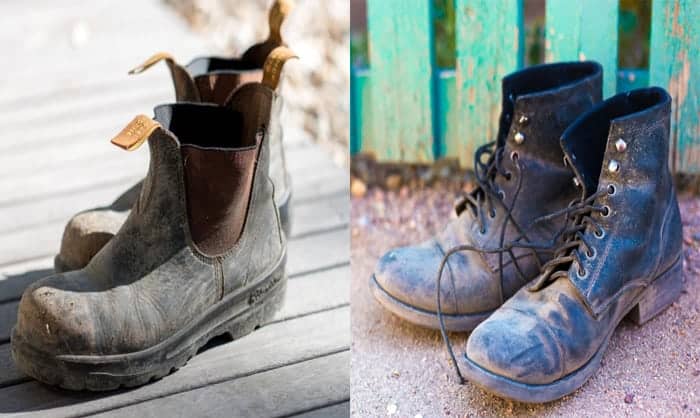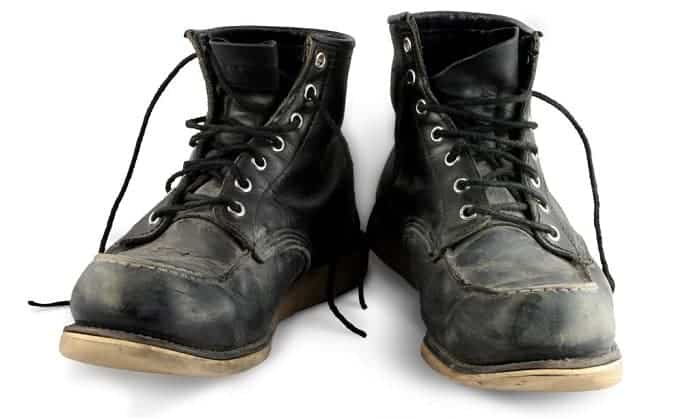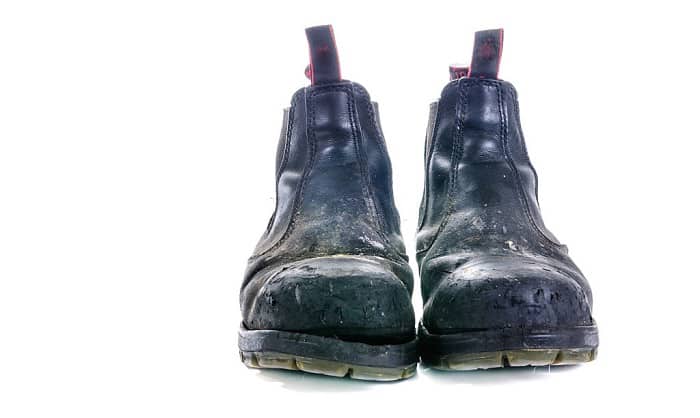Safety footwear can be a broad topic. Sometimes I feel like I can sit here and write about safety work boots for the next five years, and the topic will have yet to end. Nowadays, there are so many brands that it feels confusing to pick the appropriate safety footwear for yourself. In the other articles, we provided necessary information on choosing the right boot materials, properties, and sizes. We know that it is tough already, but it doesn’t stop there.
Work boots come in two main styles of slip-on and lace-up. At first sight, you might think there’s not much difference between the two besides what is said in their names, lace and without lace. However, once digging in, you will find the world of difference between slip on vs lace up work boots.
In this article, we will make comparisons about their level of safety, convenience, fitting, maintenance, and performance. Knowing the differences will help optimize their potential. Also, we will provide tips on choosing the suitable ones for your needs. Dive in for more details.
Table of Contents
Slip-on vs Lace-up Work Boots: the Similarities
Before we compare these boots, here are some of their similarities:
- Materials: Both are made of similar materials, such as leather, synthetic leather, rubber, or fabric.
- Purposes: The end purpose is to support and protect your feet against punctures, falling objects, debris, compression, slips, and falls at hazardous workplaces.
- Safety features: Both come in a variety of safety options like toe cap, steel or composite shank, external heel protection, heat and water resistance, and so on.
With that in mind, let’s take a closer look at their differences to make the smartest choice for yourself when buying safety footwear.
Slip-on vs Lace-up Work Boots: the Differences
1. Design
The most distinctive feature of these boots is their design.
- Slip-on work boots come without laces, as the name implies. This boot style gives you the ability to waste no time putting them on and off. Generally, the term pull-up implies mid-calf boots, while slip-on means low neck boots that fit around the ankle. Despite the raised neck, men’s pull-up work boots are easy to put on and off like slip-ons.
- On the other hand, lace-up boots come with laces to ensure fitting. The lace-up style looks more professional and flexible.
2. Safety
As mentioned above, these two boot styles have similar safety features. For example, a steel shank in the midsole to prevent punctures, a steel toe cap to protect the toes against falling objects, a slip-resistant outsole, etc. These features vary depending on the end purpose of the boots. You should read the products’ labels and descriptions carefully for further information.
Remember that at the end of the day, safety is the main reason why we wear work boots. Besides, here are a few points where they differ one another in terms of safety:
- Slip-on: Because these don’t come with laces, the wearer stands no chance of tripping owing to loose shoelaces. Most slip-ons’ uppers are waterproof, so chemical and water spills cannot get into the boots through the upper parts. However, low neck steel toed slip-ons are usually a bit loose around the ankle, leaving space for dirt and dust to get in.
- Lace-up: On the other hand, lace-up boots can hug the ankle tightly thanks to the laces. To prevent tiny particles from coming into the shoes through eyelets, designers add a kiltie under the laces. This kiltie is usually from strong and chemical-resistant materials. If you want lace-ups but worry about dust, dirt, chemicals, or water easily getting into the shoes, know that there are always options to prevent them.
Both boots feature amazing protection properties, but assure safety each time you wear work boots by:
- Lacing up your boots carefully.
- Wearing well-fitting socks to support the feet.
- Only wearing boots that fit properly, and do not cause your feet chafing or blisters.
- Wearing boots that offer the right safety functions for your job.
3. Convenience
If you are like me, always running late, go ahead and choose slip-ons for the sake of saving time. Besides, these boots are more convenient for worksites, requiring you to pull on and take off your shoes regularly. If you are new to the world of heavy-duty safety gear, wearing heavy work boots all day can lead to sore and painful legs. Slip-ons are easier to take off whenever you have a break at work.
Otherwise, both boot styles offer an equal level of comfort and convenience as long as they are the right size and design for you.
4. Fitting
Fitting is crucial when it comes to work boots. Before we discuss the differences, here is how a pair of work boots should fit you:
- The heel: When you wear new boots, it’s normal to feel a bit stiff at the heel. The new boots will loosen up after a few wears. With that being said, old boots’ heels should fit snugly and cause no heel slippage.
- The toes: When you walk, your toes should lightly touch the shoes, not push against them.
- The width and instep: The width and instep should fit snugly to your feet both with old and new boots. If the shoes are loose, one side of your feet will constantly rub against the boot, which leads to blisters.
Since work boots are heavy, thick, and sturdy, wearing the wrong size can lead to symptoms like repetitive strain injury or plantar fasciitis. Therefore, take your time to make sure they fit properly. Here is how the fitting of slip-ons differs lace-ups:
- Slip-on: The nature of leather is to stretch over time. After a long time of use, your slip-on work boots might begin to loosen and not fit well anymore. It doesn’t mean you must purchase new boots every now and then. Instead, this can easily be solved by wearing thick socks, heel pads, heel cushions, or inserting an insole inside the boots. Assure the right size when you buy these cushioning items.
- Lace-up: Your lace-ups will stretch over time, too. But thanks to the laces, all you need is to tighten them a bit more and you are good to go.
5. Maintenance
Since work boots contact dust, dirt, grease, or even chemicals every day, it’s important to clean and preserve them well. In terms of maintenance, which ones win?
Both are extremely long-lasting and require similar techniques to clean and preserve. However, without the laces, slip-ons take less time to clean. Meanwhile, to clean lace-up boots, you must take off the laces, wash the boots and the laces, dry them, then lace up the shoes, which can be a relatively long process.
6. Performance
It truly depends on your own daily activities to say which ones perform better. The lace designs offer ankle support as the laces help the fabric hug your ankle snugly. Slip-on work boots do not come with ankle support though. If you have health problems related to the ankle, lace-ups will be nicer.
Other than that, both styles perform well under many circumstances.
Which Ones Suit You Better
Slip-on work boots, especially those with high necks, are more suitable to work in fields of agriculture like farming or gardening. It is because in humid and dirty conditions, there’s no chance for water, dust, and dirt to get in through the laces and eyelets. Additionally, if your work requires dealing with oil and chemicals frequently, slip-ons do a better job at protecting your feet from liquid spills. Watch this video about Top 10 Pull On Work Boots if you are interested in this boot style.
On the contrary, lace-up work boots provide better foot support and fitting. People who need to stand for hours, walk long distances, or carry heavy loads regularly will find lace-ups more comfy and pleasant. Also, lace-ups enclose the ankles completely. If you work with fragments like flying debris from welding, shattered glasses, or milled wood, a pair of lace-ups will prevent these tiny particles from getting into the shoes.
Conclusion
Whether you need boots for working at commercial construction sites, on oil rigs, or in the garden, learning about the properties of their designs is crucial. Remember that manufacturers always have their intentions when creating a certain design. Both slip-ons and lace-ups serve very well their purpose once being used the right way.
We hope this slip on vs lace up work boots comparison helped you make the smartest choice when buying work boots. Feel free to leave your thoughts in the comment section should you have further questions. We will get to them as soon as we can. Look forward to seeing you then!

Having worked in the field of personal protective equipment for over two decades, Andrew Carnegie is a specialist in the field.
At EDC, he strives to improve performance efficiency and promote workplace safety for EDC’s readers and customers. He also researches the most up-to-date equipment that has earned relevant accreditation for use in a wide range of industries and specialties.




